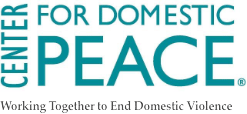What is teen dating abuse?
Unhealthy relationships can start early and last a lifetime. Teens often think some behaviors, like teasing and name-calling, are a “normal” part of a relationship. However, these behaviors can become abusive and develop into more serious forms of violence.
Teen dating abuse is defined as the physical, sexual, psychological, or emotional aggression within a dating relationship, including stalking. It can occur in person or electronically and might occur between a current or former dating partner.
Any young person can experience dating abuse or unhealthy relationship behaviors, regardless of gender, sexual orientation, socioeconomic standing, ethnicity, religion or culture. It does not discriminate and can happen to anyone in any relationship, whether it’s one that is casual or serious.
How prevalent is it?
- Nearly 1.5 million high school students nationwide experience physical abuse from a dating partner in a single year.
- One in three adolescents in the U.S. is a victim of physical, sexual, emotional or verbal abuse from a dating partner, a figure that far exceeds rates of other types of youth violence.
- One in 10 high school students has been purposefully hit, slapped or physically hurt by a boyfriend or girlfriend.
Why focus on young people?
- Girls and young women between the ages of 16 and 24 experience the highest rate of intimate partner violence — almost triple the national average.
- Among female victims of intimate partner violence, 94% of those age 16-19 and 70% of those age 20-24 were victimized by a current or former boyfriend or girlfriend.
- Violent behavior typically begins between the ages of 12 and 18.
- The severity of intimate partner violence is often greater in cases where the pattern of abuse was established in adolescence.
Why does teen dating violence happen?
Violence is related to certain risk factors. The risk of having unhealthy relationships increases for teens who:
- Believe that dating violence is acceptable
- Are depressed, anxious, or have other symptoms of trauma
- Display aggression towards peers or display other aggressive behaviors
- Use drugs or illegal substances
- Engage in early sexual activity and have multiple sexual partners
- Have a friend involved in teen dating violence
- Have conflicts with a partner
- Witness or experience violence in the home
Communicating with your partner, managing uncomfortable emotions like anger and jealousy, and treating others with respect are a few ways to keep relationships healthy and nonviolent. Dating violence can be prevented when teens, families, organizations, and communities work together to implement effective prevention strategies.
Click here to learn more about how to get help from Center for Domestic Peace or call or text our Marin Youth Services Help Line: 415.526.2557 M-F, 9am-5pm
Several other great resources and information above borrowed from:
Love is Respect: https://www.loveisrespect.org/
One Love’s Breakup Guide PDF: Breakup Planning Guide
Centers for Disease Control and Prevention: https://www.cdc.gov/violenceprevention/intimatepartnerviolence/teendatingviolence/fastfact.html
